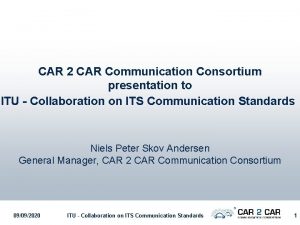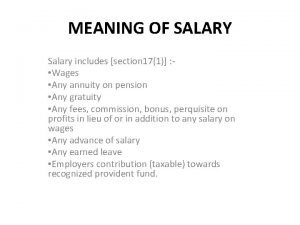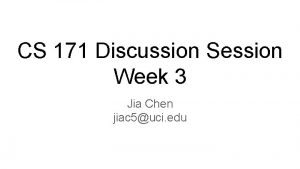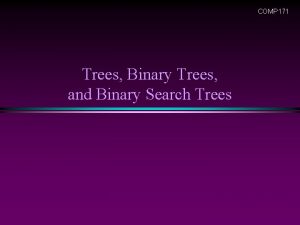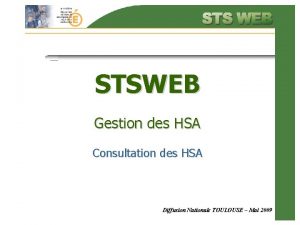Health Services Administration HSA 171 CAR Communication 1436514
















- Slides: 16

Health Services Administration HSA 171 CAR

Communication 1436/5/14

Team Communication Channels CENTRALIZED NETWORK A team communication structure in which team members communicate through a single individual to solve problems and create solutions DECENTRALIZED NETWORK A team communication structure in which team members freely communicate with one another and arrive at decisions together. 3

Team Communication Channels Centralized communication networks achieves faster solutions for simple problems. Members could simply pass relevant information to a central person for a decision. Decentralized communication networks is slower for simple problems because information is passed among individuals until someone finally put the pieces together and solved the problem. 4

Formal & Informal Communication Channels Formal Communication Channels: ◦ Vertical Communication Channels ◦ Horizontal Communication Channels. 5

Informal Communication Channels A communication channel that exists outside formally authorized channels without regard for the organization’s hierarchy of authority. 6

MANAGEMENT BY WANDERING AROUND (MBWA) A communication by which the executive interact directly with workers to learn what’s going on. MBWA works for managers at all levels. They mingle and develop positive relationships with employees and learn directly from them about their department, division or organization. 7

GRAPEVINE Communication 8

THE GRAPEVINE An informal person to person communication network of employees, which is not officially sanctioned by the organization. The grapevine links employees in all directions, ranging from the president through middle management, support staff, and line employees. Employees use grapevine rumors to fill in information gaps and clarify management decisions. It tends to be more active during periods of change, excitement, anxiety and sagging economic conditions. 9

OPEN COMMUNICATION Sharing all types of information throughout the company, across functional and hierarchical levels. Open communication traditional flow of runs counter selective to the conventional hierarchical and departmental boundaries that may be barriers to communication, the organization can gain the benefit of all employees’ ideas. 10

DIALOGUE A group communication process aimed at creating a culture based on collaboration, fluidity, trust and commitment to shared goals. The people gather together to create a stream of shared meaning that enables them to understand each other and share a view of the world. People may start out at polar opposites, but by talking openly, they discover common grounds, common issues, & shared goals on which they can build a better future. 11

FEEDBACK & LEARNING Using communication and evaluation to help the organization learn and improve. It enables managers to determine whether they have been successful or unsuccessful in communicating with others. It also helps them develop subordinates. 12

Barriers to communication INDIVIDUAL BARRIERS Interpersonal Barriers- problems with emotions and perceptions held by employees. Selecting The Wrong Channel or Medium For Sending A Communication- e. g. Emotional problems are better to transmit face to face rather than in writing Semantics- which pertains to the meaning of the words and the way they are used. Sending Inconsistent Cues Between Verbal and Non-verbal communications- When one’s facial expression does not reflect one’s words. The voice and body language must be consistent with the words and actions & should not contradict words. 13

Barriers to communication ORGANIZATIONAL BARRIERS Pertains to factors for the organization as a whole. Status and Power Difference Low power people may be reluctant to pass bad news up the hierarchy. Higher power people may not pay attention and may think that low-status people have little to contribute. Differences Across Departments In Terms of Needs and Goals Each department perceives problems in its own terms. E. g. The production department is concerned with production efficiency while the marketing department’s goal is customer satisfaction. 14

Barriers to communication Absence of Formal Channels Organizations must provide adequate upward, downward and horizontal communication. The communication flow may not fit the team’s organization’s task If a centralized structure is used for non-routine tasks, there will not be enough information circulated to solve problems. Poor Coordination Different parts of the organization are working in isolation without knowing and understanding what other parts are doing. 15

OVERCOMING COMMUNICATION BARRIERS Active Listening– means asking questions, showing interest and occasionally paraphrasing what the speaker has said to ensure that one? Is interpreting accurately. Individuals should select appropriate channel for the message – like face to face discussion or the telephone. Senders and receivers should make a special effort to understand each other’s perspectives. Management by Wandering around– Managers must be willing to get out of the office and check communications with others. 16


